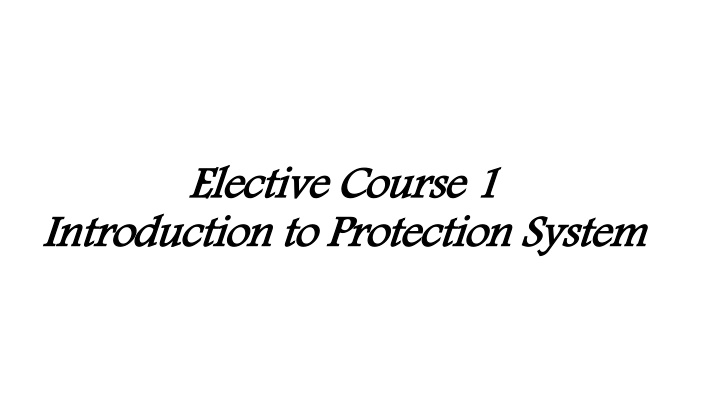
Introduction to Protection System Zones and Relay Overlapping
Learn about the philosophy of dividing a power system into protection zones, each with specific relays for fault protection. Understand the importance of overlapping protection zones to prevent voids and ensure continuous system operation. Explore the different categories of protection zones and the role of protective relays in maintaining system reliability.
Download Presentation

Please find below an Image/Link to download the presentation.
The content on the website is provided AS IS for your information and personal use only. It may not be sold, licensed, or shared on other websites without obtaining consent from the author. If you encounter any issues during the download, it is possible that the publisher has removed the file from their server.
You are allowed to download the files provided on this website for personal or commercial use, subject to the condition that they are used lawfully. All files are the property of their respective owners.
The content on the website is provided AS IS for your information and personal use only. It may not be sold, licensed, or shared on other websites without obtaining consent from the author.
E N D
Presentation Transcript
Elective Course Introduction to Protection System Elective Course 1 1 Introduction to Protection System
Zones of Protection Zones of Protection The general philosophy for the use of relays is to divide the system into separate zones, which can be individually protected and disconnected on the occurrence of a fault, in order to permit the rest of the system to continue in service wherever possible.
THE PROTECTION Zones The power system is divided into protection zones defined by the equipment and the available circuit breakers. Six categories of protection zones are possible in each power system: (1) generators and generator transformer units, (2) transformers, (3) buses, (4) lines (transmission, subtransmission, and distribution), (5) utilization equipment (motors, static loads, or other), and (6) capacitor or reactor banks (when separately protected).
THE PROTECTION Zones THE PROTECTION Zones Most of these zones are illustrated in the above Fig. . Although the fundamentals of protection are quite similar, each of these six categories has protective relays, specifically designed for primary protection, that are based on the characteristics of the equipment being protected. The protection of each zone normally includes relays that can provide backup for the relays protecting the adjacent equipment.
Zones of Protection Zones of Protection The protection in each zone should overlap that in the adjacent zone; otherwise, a primary protection void would occur between the protection zones. This overlap is accomplished by the location of the CTs the key sources of power system information for the relays. This is shown in Figure 1 and, more specifically, in Figure 2. Faults between the two CTs (see Figure 2) result in both zone X and one Y relays operating and both tripping the associated circuit breaker.
Zones of Protection Zones of Protection Fig. 2
Zones of Protection Zones of Protection For case (a): this fault probably involves the circuit breaker itself and so may not be cleared until the remote breakers at either end are opened. For case (b): zone Y relays alone opening the circuit breaker would clear faults between the two CTs from the left fault source. The relays at the remote right source must also be opened for these faults. The operation of the zone X relays is not required, but it cannot be prevented. Fortunately, the area of exposure is quite small, and the possibility of faults is low. Without this overlap, primary protection for the area between the CTs would not exist, so this overlap is standard practice in all applications.
